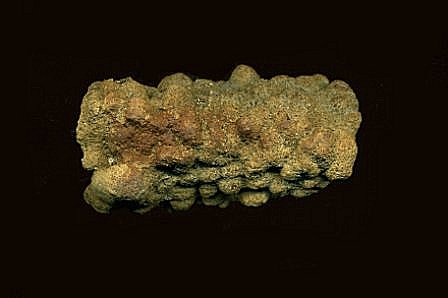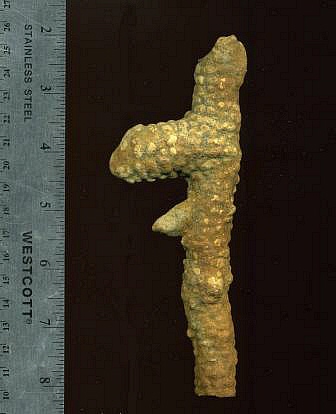|
Ghost Shrimp Mesostylus mortoni, commonly known as the ghost shrimp, leaves us with a rather fragmentary fossil record. This Cretaceous, burrowing shrimp is only represented by the claws, pincers and fossilized remains of the burrow called Ophiomorpha nodosa. Gerard Case, in his book, A Pictorial Guide to Fossils, explains “The body has no chitinous material. Only the pincers and claws are found in the fossil beds”. The ghost shrimp had two different types of claws, a large defensive claw and a smaller more delicate feeder claw. Fragments of the claws and the bumpy tube like burrow are common finds.
Ghost shrimp tube, pincer and claw section
Ophiomorpha nodosa, ghost shrimp burrow.
An example of typical finds; pincer and arm fragments.
Ghost shrimp burrow at 6 1/2 inches
A well preserved specimen, the feeder claw is in the
front
Both claws have been preserved, the arrow highlights
the start of the pincers |

